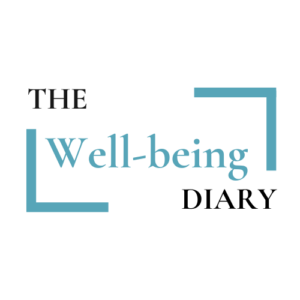How to Overcome Self-Doubt and Build Confidence

Key Takeaways
How can I overcome self-doubt and build confidence?
To overcome self-doubt, start by developing self-awareness, shifting to a growth mindset, celebrating small wins, reframing negative thoughts, building emotional resilience, surrounding yourself with supportive people, and investing in personal growth. Confidence grows with consistent action and compassion.
Self-doubt can be a quiet whisper or a deafening roar. It creeps in during job interviews, when making big life decisions, or even in everyday conversations. That nagging feeling that you’re not enough, not smart enough, not capable enough—it’s something everyone experiences. But while self-doubt is a normal human emotion, it doesn’t have to control your life.
In this blog post, we’ll explore how to overcome self-doubt and build lasting confidence by tapping into self-awareness, practicing emotional resilience, and shifting your mindset. If you’ve ever struggled with imposter syndrome or felt stuck in a cycle of fear and hesitation, this is for you.
Understanding Self-Doubt and Its Origins
To overcome self-doubt, it helps to understand where it comes from. Self-doubt often stems from early life experiences—criticism, comparison, perfectionism, or unmet expectations. As we grow older, those internalized beliefs show up as hesitation, second-guessing ourselves, or feeling like we’re not worthy of success.
In many cases, what we’re experiencing is imposter syndrome. This psychological pattern leads us to doubt our accomplishments and fear being exposed as a fraud, even when we’re fully qualified. People with imposter syndrome often attribute their success to luck or external factors rather than skill, effort, or intelligence. It can happen to anyone, from students to CEOs.
If you’ve ever thought, “I don’t deserve this role,” or “I’m not as capable as they think I am,” you’re not alone. The good news? You can break free from this mindset and develop real, grounded self-confidence.
Step 1: Embrace the Power of Self-Awareness
Self-awareness is the first step in any personal growth journey. When you can recognize self-doubt as it arises, you begin to take away its power.
Pay attention to your inner dialogue. What are you telling yourself when you’re faced with a challenge? Are those thoughts rooted in reality—or fear?
Once you start identifying these patterns, you can begin the process of transformation. Self-awareness helps you pause, reflect, and respond to fear rather than react to it.
Try journaling your thoughts or talking them out with someone you trust. This helps you gain clarity and realize that many of your fears are based on old beliefs or assumptions that no longer serve you.
Step 2: Make a Mindset Shift
One of the most effective ways to overcome self-doubt is to change the way you think about yourself and your abilities. This mindset shift involves moving from a fixed mindset (believing your talents are limited) to a growth mindset (believing you can develop through effort and learning).
With a growth mindset, failure isn’t something to fear—it’s something to learn from. This is a game-changer. When you stop viewing mistakes as proof of inadequacy and start seeing them as part of the process, your confidence begins to grow.
Start asking yourself empowering questions:
- “What can I learn from this situation?”
- “How have I grown from past experiences?”
- “What would I do if I knew I couldn’t fail?”
The more you challenge your assumptions and shift your thinking, the stronger your foundation of self-confidence becomes.
Step 3: Focus on Small Wins
One of the most practical self-confidence tips is to build confidence through action. Confidence isn’t something you wake up with—it’s something you build over time, like a muscle.
Start by setting small, achievable goals and following through. Each time you take action, even if it’s just speaking up in a meeting or trying something new, you’re proving to yourself that you’re capable.
These small wins compound over time and contribute to your sense of self-worth. They help you trust yourself more and build momentum, especially when you’re stepping out of your comfort zone and overcoming fear.
If self-doubt has kept you from going after big goals, start small and work your way up. Progress is still progress—even if it’s slow.
Step 4: Reframe Negative Thoughts with Positive Thinking
Negative self-talk is one of the most damaging habits that feeds self-doubt. It chips away at your self-esteem and keeps you stuck in cycles of anxiety and hesitation.
To break this cycle, you need to consciously practice positive thinking. This doesn’t mean denying reality or ignoring problems—it means choosing a constructive and empowering interpretation of events.
For example, instead of thinking, “I’ll never be good at this,” try, “I’m still learning, and that’s okay.”
Some helpful reframes include:
- “I’m not perfect” → “I’m human and doing my best.”
- “I don’t know how” → “I can learn.”
- “What if I fail?” → “What if I succeed?”
Over time, these mental shifts become habits, creating a new internal narrative that supports your growth and confidence.
Step 5: Build Emotional Resilience
Confidence is not about being fearless—it’s about being courageous despite the fear. That’s where emotional resilience comes in.
Resilience is your ability to bounce back from setbacks and keep moving forward. When you cultivate emotional resilience, you become more adaptable, less reactive, and more focused on solutions rather than problems.
How do you build resilience? Start with these practices:
- Accept imperfections: Everyone makes mistakes. Perfection isn’t the goal—growth is.
- Practice self-compassion: Be gentle with yourself, especially in moments of struggle.
- Seek support: Lean on others when needed. You don’t have to do it all alone.
- Stay committed: Keep showing up, even on days when you doubt yourself.
With emotional resilience, you stop fearing failure and start embracing the lessons it brings.
Step 6: Surround Yourself with the Right People
Your environment plays a powerful role in shaping your confidence. If you’re surrounded by people who uplift and encourage you, it’s much easier to maintain a success mindset. On the other hand, negative or unsupportive relationships can drain your energy and feed your insecurities.
Make it a priority to spend time with people who believe in your potential, celebrate your wins, and support your growth. Whether it’s a mentor, a friend, or a community of like-minded individuals, positive connections help reinforce your self-worth and provide a safety net when you’re struggling.
And remember—you also have the power to be that person for someone else.
Step 7: Invest in Your Personal Growth
Confidence comes from competence. The more knowledge and skills you acquire, the more prepared and capable you feel.
Personal growth can take many forms—reading books, taking courses, working with a coach, or even just pushing yourself to try new things. Each step you take adds to your toolkit and reinforces the belief that you’re growing, improving, and becoming more of who you’re meant to be.
If you’ve been holding yourself back because of fear or doubt, commit to learning something new. Confidence follows action—and action builds momentum.
Final Thoughts
Overcoming self-doubt doesn’t happen overnight. It’s a journey of self-discovery, patience, and persistence. But with each step you take, you’re rewriting the story you tell yourself—and that’s powerful.
By becoming more self-aware, making intentional mindset shifts, embracing positive thinking, and taking action, you can build real, lasting confidence. You are worthy of success. You are capable of growth. You have everything within you to move forward with courage and clarity.
The next time self-doubt shows up, remember: It’s not a sign you’re failing. It’s a sign you’re growing.
You’ve got this.
FAQ
What causes self-doubt?
Self-doubt often stems from early life experiences like criticism, comparison, or perfectionism. These experiences shape limiting beliefs that persist into adulthood.
What is imposter syndrome?
Imposter syndrome is a psychological pattern where individuals doubt their achievements and fear being exposed as a fraud, despite evident success or qualifications.
Can self-doubt be eliminated completely?
Self-doubt is a natural emotion and may never disappear completely—but it can be managed effectively through awareness, mindset work, and consistent action.
What are some practical ways to boost confidence?
Start small: set achievable goals, reframe negative self-talk, learn new skills, and celebrate progress. Confidence builds like a muscle—with use.
Why is self-awareness important for overcoming self-doubt?
Self-awareness helps you recognize limiting thoughts and break unhelpful patterns, creating space for intentional, empowering choices.
